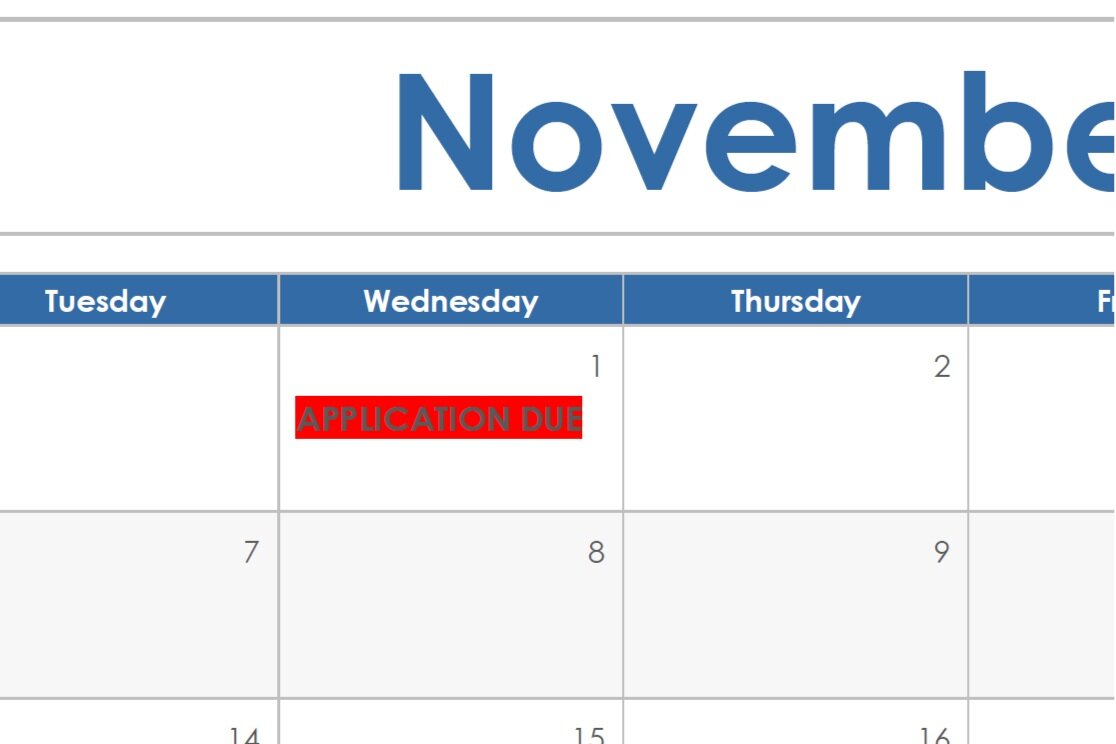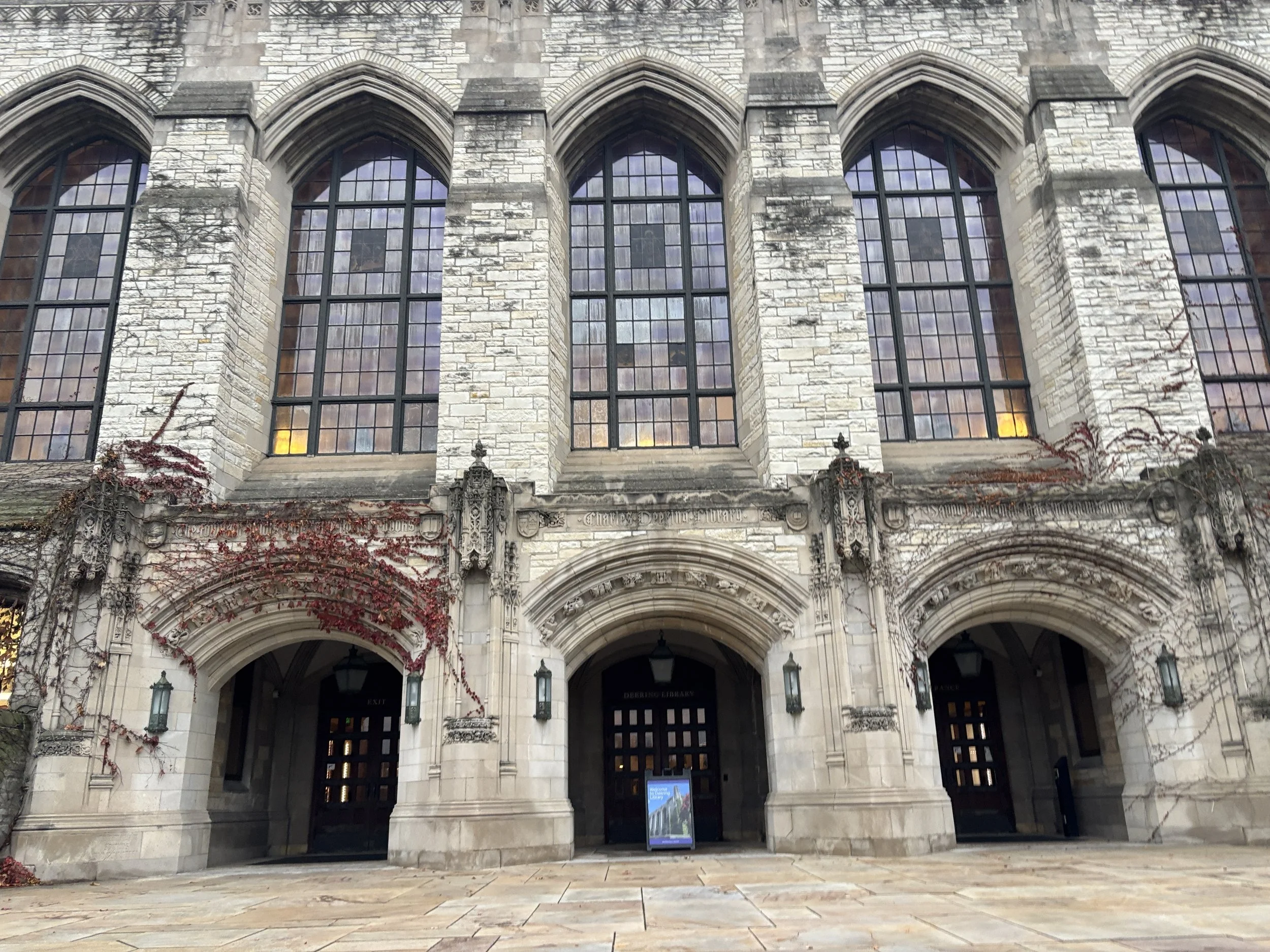5 Types of College Application Deadlines
/Colleges utilize five types of application deadlines. As students plan for college, an understanding of how each type can affect their admissions chances as well as how a deadline at one college can limit the deadline choice at another college should be a key part of planning the admissions process.
The deadline types and the benefits/drawbacks of each are described below along with specific tips from The College Spy to help you decide which deadline is best for you.
1. Early Decision (ED)
Applications are due between October 15 and November 15 (check each college’s website).
Students are notified by mid-December as to whether they were admitted, rejected or deferred to the Regular Decision round.
The decision is binding unless the student is not awarded enough financial aid to make it feasible to attend.
Admitted students must withdraw all applications to other colleges.
Some colleges have two rounds of Early Decision called ED I and ED II. Early Decision I is the ED deadline described above. Early Decision II is the same as ED I except that the application deadline is in January and notification of admission, rejection or deferral is received in mid-March. As with ED I, the decision is binding and students must withdraw all other applications if they are accepted to their ED II school.
Benefits of ED:
It is easier to get accepted if a student applies Early Decision. Some colleges accept as much as 50% of their freshmen class from their pool of Early Decision applicants. Colleges prefer to accept students who have demonstrated a clear interest in attending. Because Early Decision is binding, the student is affirmatively stating that the college is their first choice. There is no better way of demonstrating interest. Additionally, Early Decision students are competing against a smaller pool of students than they would in the Regular Decision round.
If accepted, students can relax knowing where they will be attending college next fall.
Drawbacks of ED:
Students cannot change their minds. If accepted, they must attend (unless their financial aid award does not make their attendance possible).
Students must start college planning early to be completely confident that the school they are applying to Early Decision is their first choice.
Students must prepare their application materials early in the school year.
Students will not have the opportunity to compare financial aid awards with those offered from other colleges.
Students cannot use senior year grades, activities and letters of recommendation to boost their applications.
ED Tips from The College Spy:
You must be 100% committed to attending your Early Decision college.
If your first-choice college is a reach, you have a better chance of being accepted if you apply Early Decision.
Be prepared to submit your financial aid forms as close to October 1st as possible so that you receive your acceptance AND financial aid award in December.
Before applying to a college under the Early Decision policy, understand whether the college meets 100% of financial need. Use the net price calculator on the colleges website to approximate the amount of your financial aid you will receive.
Applying Early Decision makes sense if you can identify which college is your number one choice and you are comfortable not being able to compare financial aid packages with other colleges.
Apply Early Decision II, if available, if you are rejected from your Early Decision I college, but have a clear second choice.
Skip Early Decision I and apply under the Early Decision II, if available, if you know your first-choice college but believe your first semester, senior year grades and activities will boost your chances of acceptance.
2. Early Action (EA) I and II
EA I applications are due between October 1 and November 15 (check each college’s website).
Students are notified by mid-December whether they were admitted, rejected or deferred to the Regular Decision round.
The decision is NOT binding.
Students have until May 1 to decide which college to attend.
Benefits of EA:
It is somewhat easier to get accepted. The Early Action student is demonstrating interest by preparing his/her application early.
If accepted, students can relax knowing where they will be attending college next fall.
Students can compare financial aid awards at various colleges to which they are accepted.
Drawbacks of EA:
Students need to be prepared to apply early in the school year.
Students cannot use senior year grades, activities and letters of recommendation to boost their applications.
EA Tips from The College Spy:
If you are choosing between Early Action and Regular Decision, choose Early Action unless you feel that your first semester, senior year grades and activities will boost your application.
Early Action colleges will return a decision by mid-December. If you are not accepted, you have time to apply Regular Decision to a broader range of schools.
Some colleges offer merit aid to Early Action students that is not available to Regular Decision students. Take advantage of this opportunity if you can adequately prepare your application by the Early Action deadline.
If you are a very competitive applicant for an Early Action college, don’t be surprised if you are deferred to the Regular Decision pool. Colleges are aware when they are a “safety school” for an applicant. If they believe you will ultimately reject THEM, they will hold off on making a decision on your application.
3. Single Choice Early Action (SCEA) or Restrictive Early Action (REA)
Applications are due between October 1 and November 15 (check each college’s website).
Students are notified by mid-December whether they were admitted, rejected or deferred to the Regular Decision round.
The decision is NOT binding.
Students have until May 1 to decide which college to attend.
The colleges that use SCEA/REA are Harvard, Yale, Princeton, Stanford, Georgetown and Notre Dame.
Students are restricted from applying Early Decision to another university. Additional restrictions and exceptions vary so it is important to read the directions carefully. For example, Harvard additionally restricts students from applying Early Action to other universities except public and foreign universities. Notre Dame allows students to apply Early Action to all other universities while Yale allows applicants to apply early to nonbinding Rolling Decision colleges.
Benefits of SCEA/REA:
It is easier to get accepted. Like Early Decision, applicants are demonstrating significant interest and competing against smaller pool of students.
Students can compare financial aid packages at other schools before making a final decision.
If accepted, students can relax knowing where they will be attending college next fall.
Drawbacks of SCEA/REA:
Students must start college planning early to be completely sure that the SCEA/REA school is their first choice among the potential Early Decision schools.
Students need to be prepared to apply early in the school year.
Students cannot use senior year grades, activities and letters of recommendation to boost their applications.
SCEA/REA Tips from The College Spy:
Understand that SCEA/REA colleges limit your ability to apply Early Decision to another college. If another college on your list has an Early Decision option and you would prefer to attend that college, apply Early Decision to that college and Regular Decision to the SCEA/REA school.
4. Regular Decision (RD)
Applications are due between January 1 and January 15 (check each college’s website).
Students are notified by late March as to whether they were admitted, rejected or placed on the waitlist.
Students have until May 1 to decide which college to attend.
Benefits of RD:
Students have more time to research colleges and refine their college lists.
Students can use senior year grades, activities and letters of recommendation from senior year teachers to boost their applications.
Drawbacks of RD:
Students do not have the advantage of demonstrating interest in a college though use of an early or binding application deadline.
Students must wait until the end of March for a decision, leaving them only one month to decide where to attend college.
RD Tips from The College Spy:
Apply Regular Decision if you have not had the chance to research colleges early.
5. Rolling Decision
Application is reviewed at the time the applicant sends it.
Students are notified as to whether they were admitted, rejected or placed on the waitlist approximately one month after submitting their application.
Benefits of Rolling Decision:
Students have a choice about when to submit their applications.
If accepted, students can relax knowing where they will be attending college next fall if they submit their applications early.
Students can apply later in the admissions cycle if that is when they are ready to apply.
Students can use senior year grades, activities and letters of recommendation from senior year teachers to boost their applications.
Drawbacks of Rolling Decision:
Students do not have the advantage of demonstrating interest in a college though use of an early or binding their application deadline.
The number of slots available is reduced as it gets later in the admissions cycle.
Rolling Decision Tips from The College Spy:
Send your application as soon as you can (except if you want to show off your first semester, senior year grades and activities). Even if you do not ultimately choose to attend the Rolling Admission college, knowing whether you have been accepted or rejected will inform the rest of your college search and admission process.
For more information about the 5 types of college application deadlines, listen to Episode #4 of The College Spy Podcast and see our Guide comparing the various application deadlines.
Michelle McAnaney is the founder of The College Spy, a full service independent educational consulting firm that assists students and families across the US and internationally with the college selection and application process. Prior to founding The College Spy, Michelle was a guidance counselor and educator for more than 15 years, including serving as the Director of Guidance at two high schools, an adjunct college professor and a GED tutor. Michelle holds a master’s degree in school counseling and a bachelor’s degree in human development. She completed UC Irvine’s certificate program in educational consulting and is a MBTI (Myers-Briggs Type Indicator) Certified Practitioner and a NLP (Neuro-Linguistic Programming) Master Practitioner. Michelle visits over 40 colleges each year so that she has first-hand knowledge of the colleges and universities her clients will be considering. You can find her on Facebook, Twitter, Instagram, LinkedIn and on The College Spy Podcast.





